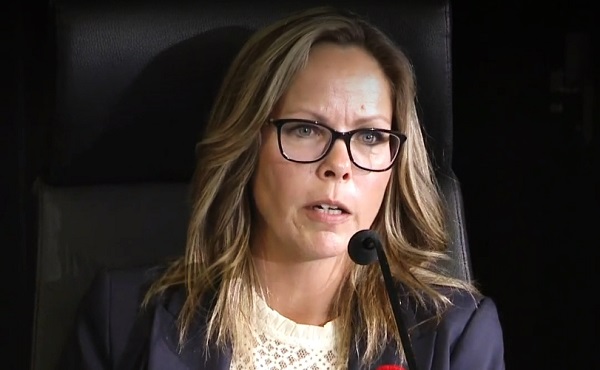Alberta
Reading and math scores plummet across Canada after COVID school closures

From the Fraser Institute
By Derek J. Allison – Professor Emeritus, Faculty of Education, The University of Western Ontario
Canada’s losses were similar, with a drop of 13 points in reading and 15 points in math. For context, a 20-point decline in test scores equals roughly one year of learning loss.
COVID school closures took a heavy toll on student learning. For parents in Canada, that’s the main takeaway from the new Programme for International Student Assessment (PISA) test results, which show substantial declines from 2018 pre-pandemic results in reading and math among 15-year-olds (the only age that participates in PISA testing).
Among high-income OECD countries, average PISA scores dropped by an unprecedented 10 points in reading and 15 points in math. Canada’s losses were similar, with a drop of 13 points in reading and 15 points in math. For context, a 20-point decline in test scores equals roughly one year of learning loss.
How did the provinces do? This is an important question, as we don’t have a national education system in Canada.
Reading scores dropped in all provinces, with the worst decline in Newfoundland and Labrador (34 points) followed by Nova Scotia (27 points), New Brunswick (20 points), Quebec (18 points), Saskatchewan (15 points), Ontario (12 points), British Columbia and Manitoba (8 points), and Prince Edward Island and Alberta (7 points).
A similar pattern emerges in math, with Newfoundland and Labrador again suffering the greatest decline (29 points) followed by Nova Scotia (24 points), New Brunswick (23 points), Quebec and Ontario (18 points), Saskatchewan (17points), Manitoba (12 points), P.E.I. (9 points), B.C. (8 points) and Alberta (7 points).
In science, the news was somewhat better, with some provinces modestly improving and only Nova Scotia (16 points) and Newfoundland and Labrador (15 points) dropping by more than 10 points. Clearly, with the exception of P.E.I., the Atlantic provinces had the greatest losses between 2018 pre-pandemic and 2022 post-pandemic test scores.
Despite the broad harvest of decline across Canada, the distribution of provincial scores remains similar to earlier results. As in 2018 and earlier, the four largest provinces—Ontario, Quebec, B.C. and Alberta—have the highest scores in all three subjects. Quebec continues to be the highest-scoring province in math, with overlapping margins of error for the other large provinces. Math scores for the remaining provinces cluster together at a significantly lower level, with P.E.I. in the middle and Newfoundland and Labrador replacing Manitoba in last place.
Reading and science scores follow a similar pattern, but with Alberta in pole position with significantly higher scores in both subjects, the other larger provinces forming a second rank cluster, and the remaining provinces a third.
The new PISA results include a rich body of information on both the extent and nature of the pandemic disruptions, which casts revealing light on the unprecedented collapse in test scores. But crucially, the large differences in score declines between the provinces cannot be simply explained by how long schools were closed. The extent and quality of learning alternatives, teacher and parental support, and socio-economic status also played important roles.
While it will take time to better understand how some provinces and schools weathered the pandemic disruptions better than others, the drops in PISA test scores underscore the challenges students and teachers face today, especially in the hardest hit provinces.
Author:
Alberta
Diploma Exams Affected: No school Monday as ATA rejects offer of enhanced mediation

Premier Danielle Smith, Minister of Finance Nate Horner, and Minister of Education Demetrios Nicolaides issued the following statement.
“Yesterday, the Provincial Bargaining and Compensation Office wrote to the Alberta Teachers’ Association (ATA) and formally requested an agreement to enter an enhanced mediation process.
“This process would have ensured that students returned to the classrooms on Monday, and that teachers returned to work.
“Negotiating would have continued with the ATA, Teachers’ Employer Bargaining Association (TEBA) and a third-party mediator to propose a recommended agreement.
“We are very disappointed that the Alberta Teachers’ Association refused this offer. Teachers and students should also be disappointed.
“PBCO made this offer to the ATA because the union has not made a reasonable offer and this strike is impacting students. Alberta’s government is trying to put kids first and bring an end to this strike.
“The offer of enhanced mediation provided a clear path to ending it.
“We want the same things as the ATA: More teachers. More pay for teachers. More educational assistants. And more classrooms.
“This strike has gone on too long and we are extremely concerned about the impact it is having on students.
“We are willing to consider further options to ensure that our next generation gets the world-class education they deserve. After about three weeks, a strike of this nature would reach the threshold of causing irreparable harm to our students’ education.
“The ATA needs to do what is right for its members, and for all Alberta students.
“If it refuses to do so, we will consider further options to bring this strike to an end.”
Diploma exam update
November diploma exams will be optional for students.
With instructional time in schools disrupted due to the teacher strike, the November 2025 diploma exams will now be optional for students. Students who wish to write a diploma exam may request to do so, and their school boards will accommodate the request.
The optional diploma exams apply to all schools provincewide. These exams will still take place on the currently scheduled dates.
Students who choose not to write the November diploma exams can still complete their courses and graduate on time. Their final grade will be based entirely on the school-awarded mark provided by their teacher.
Choosing not to write the November diploma exams will not affect a student’s ability to apply to, be accepted by, or attend post-secondary institutions after graduation.
No changes have been made to the January and June diplomas and provincial achievement tests.
Quick facts
- Students are automatically exempted from writing the November diploma exams but can request to write them.
- School boards must allow the student to write the diploma exam if requested.
Alberta
Alberta taxpayers should know how much their municipal governments spend

From the Fraser Institute
By Tegan Hill and Austin Thompson
Next week, voters across Alberta will go to the polls to elect their local governments. Of course, while the issues vary depending on the city, town or district, all municipal governments spend taxpayer money.
And according to a recent study, Grande Prairie County and Red Deer County were among Alberta’s highest-spending municipalities (on a per-person basis) in 2023 (the latest year of comparable data). Kara Westerlund, president of the Rural Municipalities of Alberta, said that’s no surprise—arguing that it’s expensive to serve a small number of residents spread over large areas.
That challenge is real. In rural areas, fewer people share the cost of roads, parks and emergency services. But high spending isn’t inevitable. Some rural municipalities managed to spend far less, demonstrating that local choices about what services to provide, and how to deliver them, matter.
Consider the contrast in spending levels among rural counties. In 2023, Grande Prairie County and Red Deer County spent $5,413 and $4,619 per person, respectively. Foothills County, by comparison, spent just $2,570 per person. All three counties have relatively low population densities (fewer than seven residents per square kilometre) yet their per-person spending varies widely. (In case you’re wondering, Calgary spent $3,144 and Edmonton spent $3,241.)
Some of that variation reflects differences in the cost of similar services. For example, all three counties provide fire protection but in 2023 this service cost $56.95 per person in Grande Prairie County, $38.51 in Red Deer County and $10.32 in Foothills County. Other spending differences reflect not just how much is spent, but whether a service is offered at all. For instance, in 2023 Grande Prairie County recorded $46,283 in daycare spending, while Red Deer County and Foothills County had none.
Put simply, population density alone simply doesn’t explain why some municipalities spend more than others. Much depends on the choices municipal governments make and how efficiently they deliver services.
Westerlund also dismissed comparisons showing that some counties spend more per person than nearby towns and cities, calling them “apples to oranges.” It’s true that rural municipalities and cities differ—but that doesn’t make comparisons meaningless. After all, whether apples are a good deal depends on the price of other fruit, and a savvy shopper might switch to oranges if they offer better value. In the same way, comparing municipal spending—across all types of communities—helps Albertans judge whether they get good value for their tax dollars.
Every municipality offers a different mix of services and those choices come with different price tags. Consider three nearby municipalities: in 2023, Rockyview County spent $3,419 per person, Calgary spent $3,144 and Airdrie spent $2,187. These differences reflect real trade-offs in the scope, quality and cost of local services. Albertans should decide for themselves which mix of local services best suits their needs—but they can’t do that without clear data on what those services actually cost.
A big municipal tax bill isn’t an inevitable consequence of rural living. How much gets spent in each Alberta municipality depends greatly on the choices made by the mayors, reeves and councillors Albertans will elect next week. And for Albertans to determine whether or not they get good value for their local tax dollars, they must know how much their municipality is spending.
-

 International2 days ago
International2 days agoPoland’s president signs new zero income tax law for parents with two children
-

 Business1 day ago
Business1 day agoFord’s Whisky War
-

 International2 days ago
International2 days agoAustralian territory bans men from women’s prisons in national first
-

 National2 days ago
National2 days agoPoilievre accuses Canada’s top police force of ‘covering up’ alleged Trudeau crimes
-

 Agriculture10 hours ago
Agriculture10 hours agoIs the CFIA a Rogue Agency or Just Taking Orders from a Rogue Federal Government?
-

 COVID-192 days ago
COVID-192 days agoFreedom Convoy leader Tamara Lich says ‘I am not to leave the house’ while serving sentence
-

 Focal Points1 day ago
Focal Points1 day agoTrump Walks Back His Tomahawk Tease from Zelensky
-

 Automotive1 day ago
Automotive1 day ago$15 Billion, Zero Assurances: Stellantis Abandons Brampton as Trudeau-Era Green Deal Collapses









